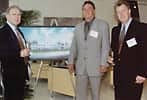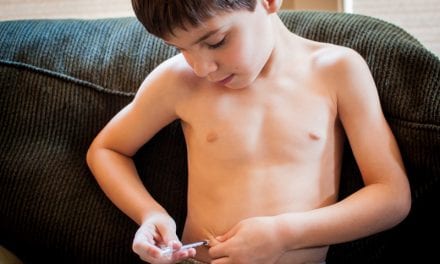| Research Could Lead to Answers About SIDS, Sleep Apnea A new study from a University of Missouri-Columbia researcher, scheduled to be published in the Journal of Neuroscience later this spring, explores the link between muscle movement and breathing rhythms that may shed new light on disorders such as SIDS and sleep apnea. During his research, Jeffrey Potts, PhD, an associate professor of veterinary biomedical science and research investigator at the Dalton Cardiovascular Research Center, discovered that the movement of limb muscles stimulated a response in the brain that changed breathing patterns. He found these pathways by stimulating skeletal muscle and then observing whether certain groups of respiratory neurons were activated. By identifying these neural pathways, scientists may be able to learn more about conditions that are associated with alterations in the normal processing of signals by these pathways, such as may occur in SIDS or sleep apnea. |
Southern Sleep Society Hosts Meeting
The Southern Sleep Society will be holding its annual meeting from March 31 to April 3, 2005, at the Hyatt Regency New Orleans. The 2005 meeting will feature seminars including EEG & Epilepsy—A Show-and-Tell Introduction, Avoiding Near Misses and Catastrophes in the Sleep Laboratory, Cognitive Behavior Therapy for Late-Life Insomnia, and Insomnia and Depression: Diagnostic Dilemmas and Treatment Triumphs. For updated meeting information, visit www.southernsleepsociety.org.
Sleep Technician Certification Examination Set for June 11
The Board of Registered Polysomnographic Technologists (BRPT) predicts a record number of candidates for the certifying examination scheduled at nearly 40 test sites on Saturday, June 11, 2005. Of particular interest to those considering taking the examination this June, BRPT will publish a comprehensive RPSGT Examination Study Guide and offer several online practice examinations, both available in March.
Sleep Position Causes Jaw Pain
Nearly 11 million Americans have complaints of jaw pain, clicking, movement limitations, and other symptoms of temporomandibular joint (TMJ) disorders. To determine whether sleep position might contribute to the problem, a study, reported in the Journal of Oral Rehabilitation, was conducted in Japan on 87 patients diagnosed by magnetic resonance imaging as having anterior disc displacement (ADD) on one or both sides of their TMJ. The researchers identified five habitual sleep positions: supine, prone, right lateral, left lateral, and no-dominant position. They found that of the 50 subjects who had ADD on one side, the dominant sleeping position for 66% of them was on the same side; none of these subjects slept on the opposite side. The investigators concluded that habitual body position during sleep is a possible contributing factor to TMJ problems.
| Book Review
The Neurolab Spacelab mission was a 16-day neuroscience research flight that focused on weightlessness related to five areas: the balance system; sensory integration and navigation; nervous system development; blood pressure control; and circadian rhythms, sleep, and respiration. The book is divided into three sections: scientific reports from the individual research teams summarizing their research; technical reports that describe particularly interesting procedures or special equipment developed specifically for the experiments; and crew members’ perspectives on significant aspects of the mission. Introductions and abstracts provide an overview, while the scientific and technical reports on the experiments offer more in-depth information. The scientific reports section includes three experiments on how spaceflight influences circadian rhythms, sleep, and respiration. The first experiment investigated sleep, circadian rhythms, cognitive performance, and light-dark cycles in astronauts, and whether melatonin can treat sleep problems. The second studied the relationship between sleep-disordered breathing and sleep disruption. The final experiment used rats to test whether microgravity would affect the circadian timing system in mammals. A description of the portable sleep monitoring system used in the sleep studies—including a special suit for measuring respiratory movements, sleep headgear that provided electroencephalography and eye movement data, and a portable recording device for processing and saving data—is provided in the book’s technical reports section. Photos taken aboard the space shuttle, as well as charts and illustrations, are also included throughout the book. The Neurolab Spacelab Mission: Neuroscience Research in Space, published by NASA’s Lyndon B. Johnson Space Center, was edited by Jay C. Buckey, Jr, MD, and Jerry L. Homick, PhD. Buckey was a payload specialist astronaut on board the Neurolab flight, and Homick was the mission scientist on the ground. To order The Neurolab Spacelab Mission: Neuroscience Research in Space, contact the US Government Online Bookstore at (866) 512-1800; e-mail: [email protected]; or http://bookstore.gpo.gov. |


 Space Shuttle Experiments Included Those on Circadian Rhythms, Sleep, and Respiration
Space Shuttle Experiments Included Those on Circadian Rhythms, Sleep, and Respiration


